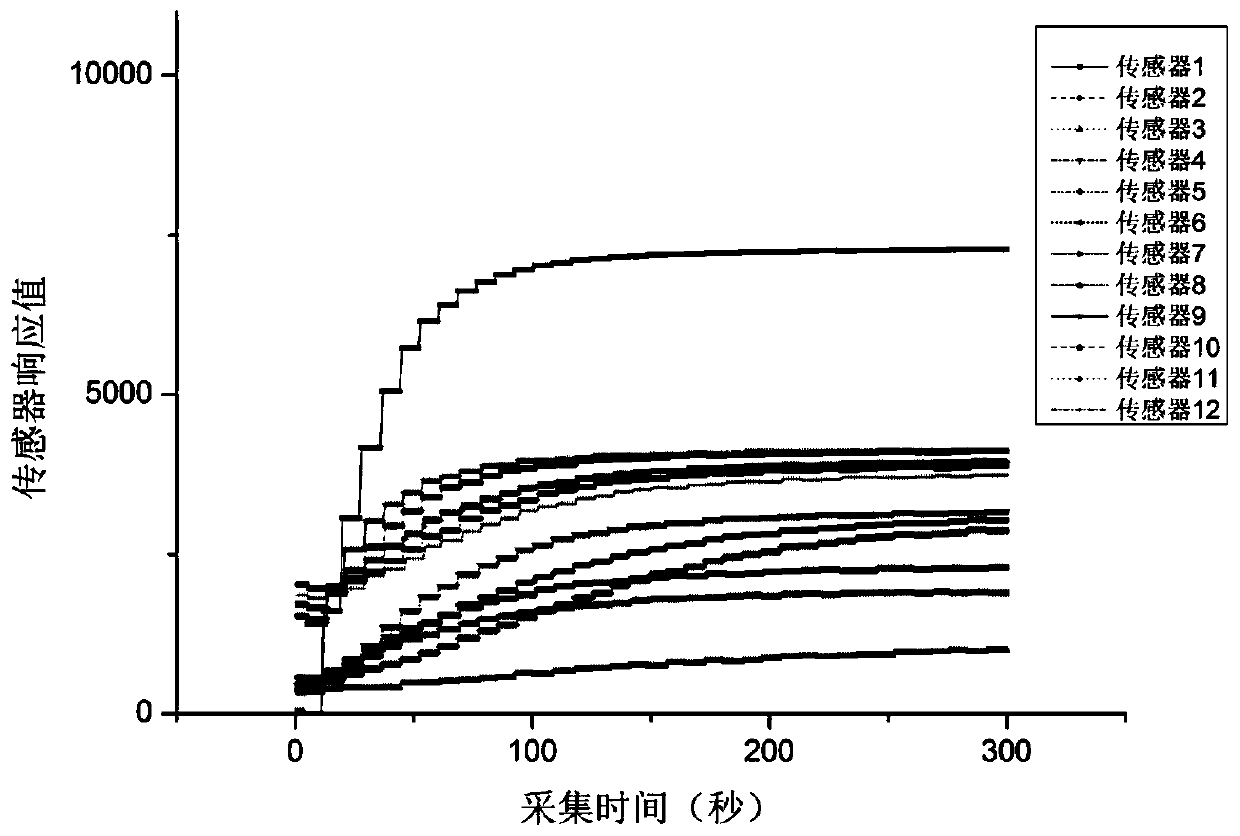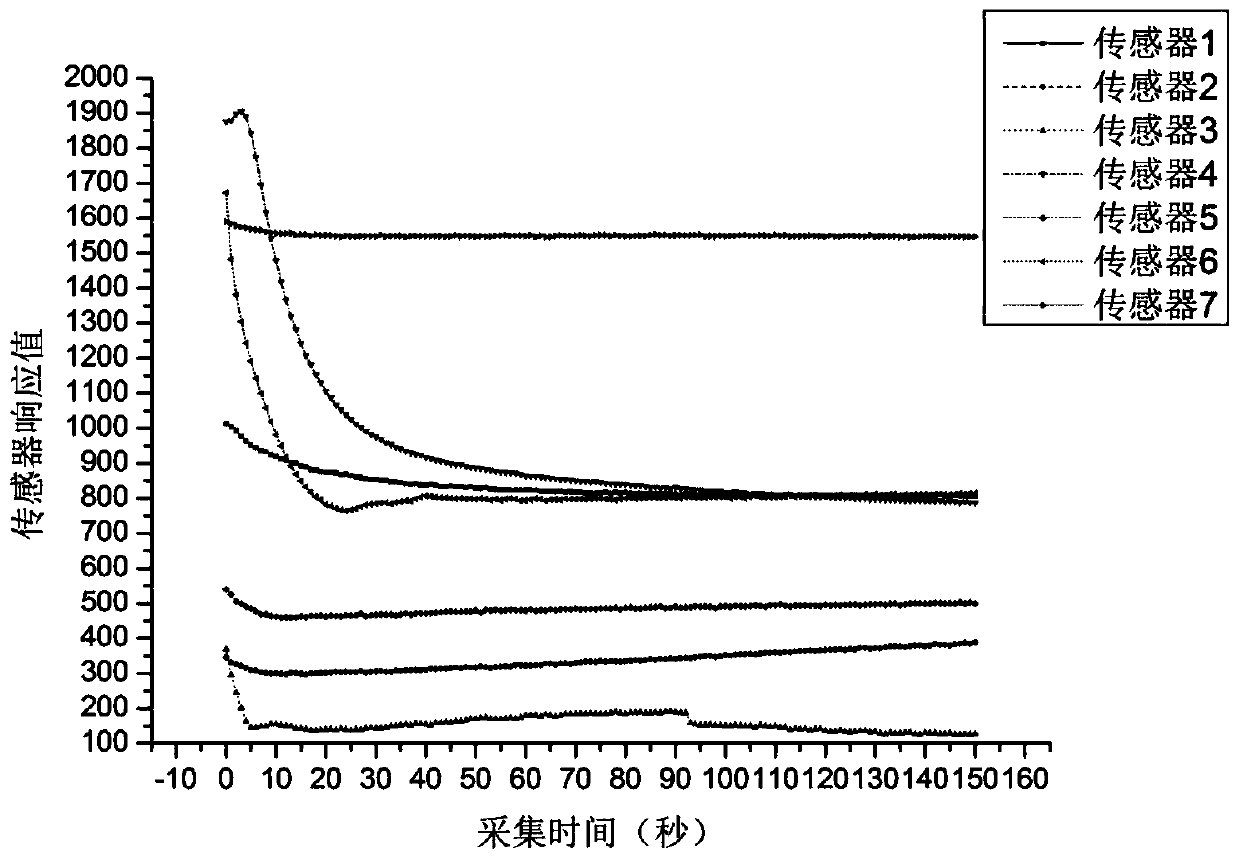Quantitative characterization method of aromatic vinegar flavor and based on electronic nose and electric tongue intelligent sensory technology
An intelligent sensory and electronic nose technology, applied in electrochemical variables of materials, measuring devices, material analysis by electromagnetic means, etc., can solve the problems of ignoring vinegar taste information, no further explanation of differences, and room for improvement in detection speed.
- Summary
- Abstract
- Description
- Claims
- Application Information
AI Technical Summary
Problems solved by technology
Method used
Image
Examples
Embodiment
[0049] (1) Collection of test samples: select vinegar samples of different vinegar ages (new vinegar, vinegar age of 6 months, 12 months, 18 months, 48 months and 84 months) from Zhenjiang Hengshun Sauce and Vinegar Factory. Three different batches of vinegar samples were taken at the age of vinegar planting, with 10 samples for each batch.
[0050] (2) The GC-MS detection process is as follows: use a pipette to pipette 8 mL of vinegar sample into a 15 mL extraction bottle, add 10 uL of 6.212 g / L 4-methyl-2-pentanol as an internal standard substance, and then add 2.5 g sodium chloride, put the lid on, and put it in a 50°C constant temperature water bath to balance for 10 minutes, insert the SPME extraction head from the rubber pad of the bottle cap into the headspace of the sample, push out the fiber head about 1.5cm from the liquid surface, and absorb it in the headspace 40min, stirring speed 250rpm; after the extraction is completed, take out the fiber head, then insert th...
PUM
 Login to View More
Login to View More Abstract
Description
Claims
Application Information
 Login to View More
Login to View More - R&D
- Intellectual Property
- Life Sciences
- Materials
- Tech Scout
- Unparalleled Data Quality
- Higher Quality Content
- 60% Fewer Hallucinations
Browse by: Latest US Patents, China's latest patents, Technical Efficacy Thesaurus, Application Domain, Technology Topic, Popular Technical Reports.
© 2025 PatSnap. All rights reserved.Legal|Privacy policy|Modern Slavery Act Transparency Statement|Sitemap|About US| Contact US: help@patsnap.com



